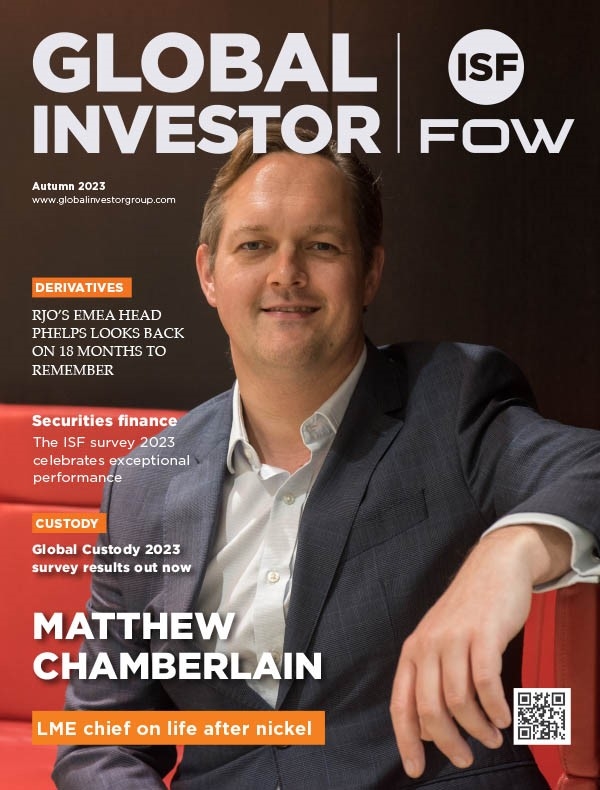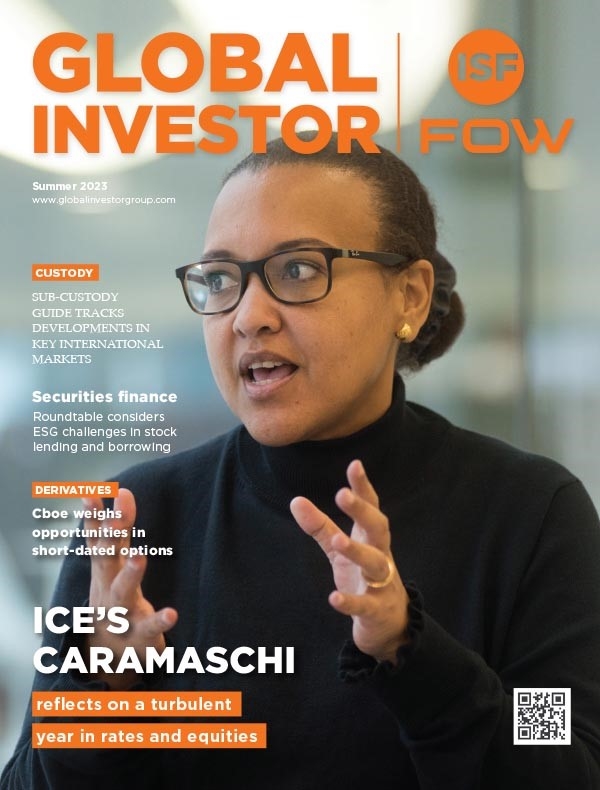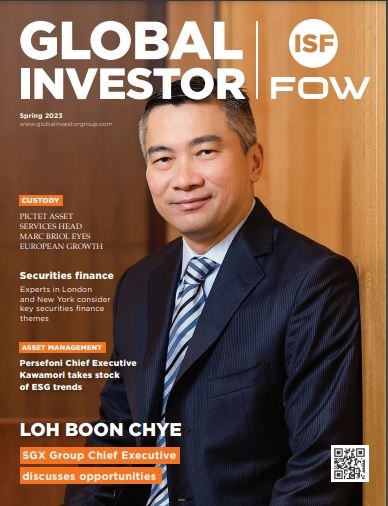Nomura: Back to basics
Transition management assignments range widely, from liquidation of single currency portfolios, to wholesale restructures of investments across regions, countries, and currencies. Add in derivatives – either as overlays or primary trading constituents – and complex implementation strategies emerge, requiring meticulous project management and operational control. It is imperative for the transition manager to possess the right knowledge base and transition tools, in order to administer and execute events effectively for clients.
At the time of writing, the CBOE Volatility Index – a measure of implied volatility also known as the Fear Index – had just retreated from a two-week high caused by political unrest in Ukraine. The chart below depicts price volatility of the MSCI World Index over the past six months. Following a progressive decline reaching a floor of 36 basis points (bps) during the last quarter of 2013, volatility rose to 82 bps in February.
While other areas of the capital markets may focus on a particular asset class, a transition provider must manage and execute a broad range of financial instruments – equities, fixed income, foreign exchange, commingled funds and structured products to name but a few. The most prolific and effective of transition managers will have a progressive knowledge of different products and demonstrate expertise in combining them to reduce aggregate cost and risk.
A transition manager must be able, quickly but accurately, to analyse and process vast amounts of information into pre-trade and post-trade reporting, trading strategies and extensive management of numerous transition stakeholders. Attention to detail is a rudimentary prerequisite and reliable access to well-designed transition management systems, with critical data at the manager’s fingertips, reduces the incidence of costly errors and drives uniform standards of delivery.
Absolute clarity with prospects and clients in regards to potential conflicts of interest is crucial. This process should start with a definition of the “clarity of role” as defined by the FCA. The provider should clearly delineate whether it will trade as an agent or in a risk capacity or both. The transition manager should provide clear and concise descriptions of the potential conflicts of interest that may arise and how it proposes to manage said conflicts. A discussion should then be held with the client and agreed contractually, to ensure there is no misunderstanding of accountability for either party.
Of particular importance is the area of remuneration. Through discussions and legal exchanges with clients and consultants, the transition manager needs to outline clearly the methods used for quantifying remuneration. If there are additional income streams, supplementing the headline commissions and fees, these should be clearly deconstructed to allow the client to make an informed decision.
Superior access to liquidity and demonstrating a clear process for achieving best execution is the cornerstone of transition management. There are constant changes in this area with new facilities arriving almost daily in the equity space and an incremental movement towards agency style trading of OTC products. A capable transition manager needs to showcase the ability to evolve and develop with the times, continually enhance technology and meet the ever-increasing demands for granular data.
Equities
Execution pedigree is increasingly driven by the adaptability of a manager’s electronic trading capabilities. For developed equities, where legislative frameworks have encouraged greater liquidity fragmentation, transition managers should have access to the same monitoring tools used by the traders, to track execution venue breakdown, spread capture and critique fills intraday.
In emerging markets, while the structure is more homogenous, quote-driven trading can hamper the evaluation of indicative demand. In these circumstances, having an active dialogue with the local execution desk is crucial to maintaining a handle on performance and being able to appraise block trading opportunities suitably.
Full transparency of child order transactions by way of stockpiling fill data with forensic precision – quantities, prices, venues, time stamps and, where available, contemporaneous bids and offers – is an important differentiating feature for managers required to attest to best execution.
Fixed income
In fixed income, given the lack of universal trade reporting and the practicality of market making for certain benchmarks, levels of transparency are more variable. Taking a methodical approach to the formation of fixed income execution strategies is vital.
• Should the manager follow a multi-counterparty approach or is there adequate liquidity provision internally to facilitate execution – benchmarking to independent pricing sources?
• For hard-to-source names, should a multi-dealer electronic broking screen be used or an interdealer broker – that is, who should have direct control over how extensively and frequently securities are marketed, the transition manager or a broker?
• To increase in-kind value, will a target manager be receptive to the substitution of the requested bonds for similar duration and maturity names that are already held within a client’s legacy portfolio?
The decisions listed above should be made in advance of the business end of a transition, consistent with the pre-agreed strategy for managing execution progress and intra-day skews. At the point of execution there is a necessity to extract as much information as possible. An assortment of different pricing tools may be required to capture both the indicative and executed levels. It is imperative that all executions can be justified retrospectively with reference to the market’s perception of fair value.
Exchange traded funds
Providing alternatives to near-cash products continues to be an important component of strategic allocation during multi-phased events.
Foreign exchange
Despite agency-style execution becoming increasingly prevalent, the acid test for demonstrating best execution in FX remains the same – ensuring the levels obtained stand up to the benchmark rates recorded around the timestamp of execution.
Reporting – and communication with clients in general – has always been a critical area for managers to differentiate themselves. The drive for clarity and transparency has been underway for a number of years but, as highlighted by the FCA, still requires specific attention going forward.
• Reporting needs to clearly outline the benchmark being used to evaluate performance, whether that is closing prices as of T-1 – implementation shortfall – or another metric such as the market close.
• Daily trading feedback should include explicit detail on accrued costs, residual opportunity cost and any departures from the original strategy. Transparency is enhanced when clients can see shortfall taking shape for themselves over time.
• Execution data should be fit for independent review and free from normalisations that could otherwise inhibit the ability of the client or consultant to process the information as they see fit.
• Providers will often use proprietary analytics to present their findings in bespoke formats and different clients will have their own requirements. Given this variation in reporting, ensuring that T-standard compliant data is also available provides a common basis to compare performance between events and providers.
Transitions are becoming increasingly complex and a cost-efficient transition requires a combination of skilled resources and a wide range of capabilities. Changes in government regulations, especially in Europe – Solvency II, for example – may increase the number of transitions in the market. Plan sponsors have raised the bar in the quality of service and cost transparency required of their transition managers, which has driven the industry to improve its product accordingly.
While the industry has undoubtedly experienced some negative publicity in the past two years, the level of service that plans now receive in transition management has never been higher. But at a time of industry introspection, a return to the basic principles is always a useful exercise.
Found this useful?
Take a complimentary trial of the FOW Marketing Intelligence Platform – the comprehensive source of news and analysis across the buy- and sell- side.
Gain access to:
- A single source of in-depth news, insight and analysis across Asset Management, Securities Finance, Custody, Fund Services and Derivatives
- Our interactive database, optimized to enable you to summarise data and build graphs outlining market activity
- Exclusive whitepapers, supplements and industry analysis curated and published by Futures & Options World
- Breaking news, daily and weekly alerts on the markets most relevant to you



